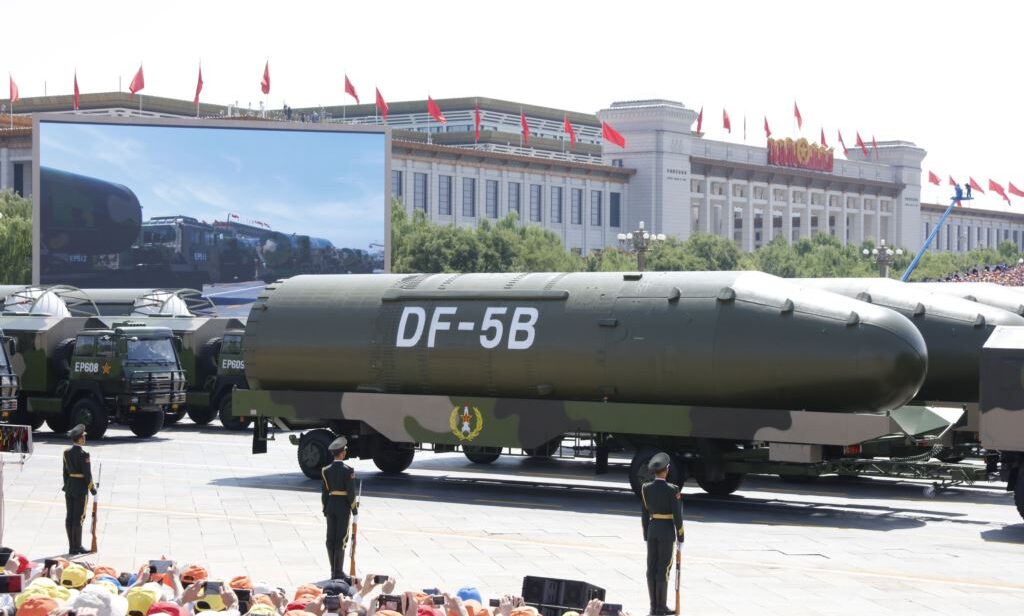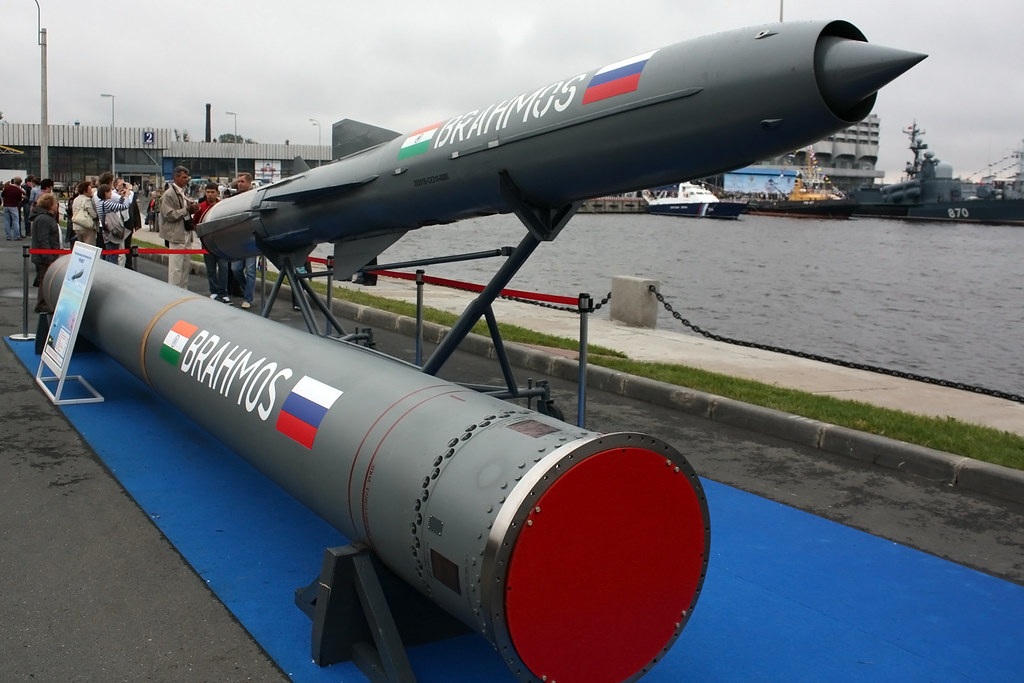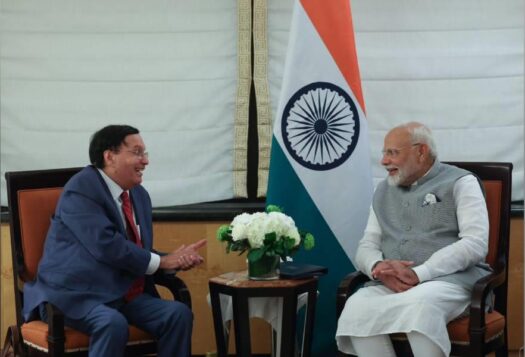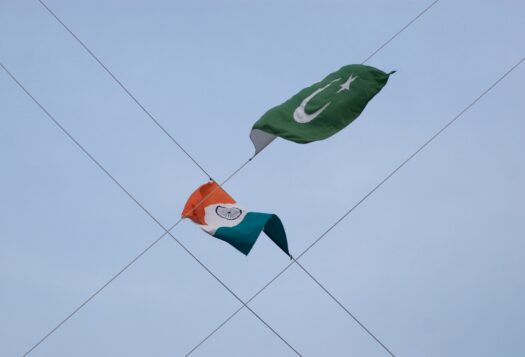
To celebrate the release of Missile Technologies in Southern Asia, a new online course from the Stimson Center South Asia Program’s Strategic Learning initiative, the SAV editorial team collaborated with Strategic Learning program lead and Stimson Center Research Associate Zeba Fazli and Stimson Scoville Fellow Shafaq Khan on a wide-ranging SAV Q&A that explores the role and impact of missiles on competition between the United States, China, India, and Pakistan. Fazli and Khan interviewed experts Debak Das (Assistant Professor in Peace and Security at the Josef Korbel School of International Studies at the University of Denver) and David Logan (Assistant Professor of Security Studies at the Fletcher School of Law and Diplomacy at Tufts University), alongside Missile Technologies in Southern Asia course lecturers Beenish Pervaiz (PhD Candidate, Brown University) and Manpreet Sethi (Distinguished Fellow, Centre for Air Power Studies, New Delhi).
This SAV Q&A has been edited for length and clarity.
I: Why Do Missiles Matter?
What makes missile technologies unique tools in states’ weapons arsenals? Why are missile technologies important for understanding strategic competition in Southern Asia?
David Logan: Missiles are the primary delivery vehicle for nuclear weapons today. While nuclear-armed states also typically envision using piloted aircraft as nuclear delivery vehicles, missiles offer several advantages. First, they can be more survivable. While aircraft are often concentrated in a few bases and can be destroyed or disabled with relatively low overpressures, missiles can be protected in dispersed and hardened silos, making them harder to destroy. Second, missiles can provide better promptness and surprise due to their faster speeds. Third, missiles may be better than aircraft at penetrating adversary defense systems. Fourth, missiles can typically require less maintenance. Some of these factors, while potentially providing operational advantages, can also dangerously compress the decision times available to leaders. Missiles can also have downsides relative to aircraft such as not being recallable, having predictable (if ballistic) trajectories, having lower payloads and higher costs, and having more easily detectable launches with space-based infrared systems.
Debak Das: There are a number of factors that make missile technologies desirable for states. These range from the tangible to the intangible. For example, from the tangible standpoint, once you’ve acquired the technology, missiles are cheaper to produce and use. In comparison, traditional manned aircraft like fighters/bombers might be able to achieve the same objectives but are more expensive and put pilots at risk (if shot down). The unmanned guided weapons delivery route that missiles offer is certainly more advantageous. From an intangible standpoint, the building of missile technology is associated with greater prestige in the international arena. This also signals scientific and technical expertise.
Missile technologies are important in understanding the strategic competition in Southern Asia because in the last couple of decades, there has been a considerable proliferation of different types of missile technologies in the region.
II: Missile Developments Across Southern Asia
Manpreet and Beenish, in your views, what are the most important developments in India’s and Pakistan’s missile capabilities over the last 5 years? What can these developments tell us about each state’s respective perception of the evolving security environment in the region?
Manpreet Sethi: Besides the routine user testing of operational nuclear-capable ballistic missiles, India’s missile tests over the last five years indicate three important developments. One, five tests of Agni V in as many years shows a desire to make it operational, but not a panicked haste to do so. Second, the period also shows three tests of Agni-P, a new medium-range ballistic missile of 1000-2000 km range, which has been referred to as a highly accurate canisterized, solid-fueled, mobile missile. Three, the testing of the hypersonic missile demonstrator called the HSTDV was tested three times over the last 5 years, the first time in June 2019 and twice more since then, the last being in Jan 2023.
With Agni V, it is evident that India wishes to acquire adequate ranges to signal credible deterrence against China. Agni-P is slated to replace some of the older Agni-I missiles with upgraded technologies to add to its reliability and accuracy. Tests of the hypersonic missiles indicate R&D to stay abreast of emerging technologies, which have already been inducted by China. India has not officially declared any interest in MIRVed missiles. While some senior Defense Research and Development Organization (DRDO) scientists have discussed the potential for developing such a capability, there is no evidence that the Indian government has approved a MIRV program. The decision to move towards MIRVed missiles, if taken, is likely to be influenced by the introduction of this capability by China and Pakistan.
Manpreet Sethi: “The security dilemmas being created by the offense-defense spiral [between China and the United States] adversely impact India and Pakistan since they are part of this strategic chain.”
Beenish Pervaiz: Pakistan is actively developing and improving its ground and sea-launched missile technologies by upgrading their range, payload capacity, and guidance systems. These developments are India-centric and aim to match or counter their neighbor’s missile expansion. In recent years, some significant advances have included the development of the MIRVed Ababeel missile. Ababeel is a three-stage solid-fueled missile that Pakistan claims can carry MIRVs. MIRVs can not only increase the lethality of each missile and create the grounds for disproportionate and overwhelming nuclear attacks but can also raise doubts about a surprise first strike.
Moreover, Pakistan is developing and improving its sea-based deterrent in response to India’s ship-launched and submarine-launched, nuclear-capable ballistic missiles. In 2017, they tested the Babur-3 Submarine-Launched Cruise Missile (SLCM) from a submerged mobile platform in the Indian Ocean. A missile arms race continues in the region, threatening crisis and strategic stability.
It is important to note that these developments operate in the context of multiple nuclear dyads interacting, forming a strategic chain. Hence, the perceived missile gap and the related security dilemma trickles down from the United States, China, India, and ultimately to Pakistan.
David, you recently co-published a monograph with Phillip Saunders analyzing the drivers of China’s nuclear force development. Can you summarize your approach and your findings as they relate to China’s missile capabilities and advancements?
DL: Over the last few years, we’ve seen growing evidence that China is substantially modernizing and expanding its nuclear forces. This includes increasing the size, diversity, sophistication, and readiness of those forces. However, we have relatively little evidence on why this is occurring, and analysts have proposed several plausible competing explanations. Our report uses new evidence to shed light on which explanations are most likely.
First, we identify competing explanations for why China may be undertaking this modernization and expansion. Second, we determine the observable implications of each explanation. In other words, what indicators would we expect to see if each explanation were correct. This allows us to directly compare the explanations against each other. Third, using new data, including an analysis of Chinese military reporting, professional military education enrollment, and patent applications related to missile silos, we assess which explanations are most supported. We find evidence for three drivers of China’s nuclear force development: ensuring a secure second-strike; developing a nuclear shield that may make conventional military operations easier; and enhancing China’s status as a great power.
Beenish, how would you assess Southern Asian states’ increasing reliance on dual-use missile technologies? How might this shape threat perceptions across the region?
BP: There are two perspectives on this issue. On the one hand, commingling conventional and nuclear capabilities can create ambiguity about whether the delivery system carries a conventional or a nuclear warhead. This mischaracterization can complicate deterrence calculations and may even lead to inadvertent escalation. On the other hand, this warhead ambiguity may also induce caution from an adversary that wants to avoid incorrectly identifying a non-nuclear as a nuclear delivery system and vice versa. Moreover, it may reduce the incentive to launch a disarming first strike.
In the India-Pakistan rivalry, previous crises saw the use of dual-capable Mirage and F-16 aircrafts, but the escalatory impact of these systems remains uncertain. However, a close call worth mentioning is the March 2022 incident when an Indian BrahMos cruise missile misfired, and the missile accidentally landed in Pakistan. Although Pakistan showed restraint and did not retaliate, this incident raises concerns due to some speculation that BrahMos may be dual-capable. It highlights the risks associated with accidents and miscalculations involving systems that an adversary may perceive as dual-capable, which can lead to lowering the nuclear threshold. Moreover, with increasing doubts about the commitment to policies such as no first use in Southern Asia, introducing dual-use systems can create more uncertainty and further heighten tensions.
Expanding toward China—David, how would you assess the place of dual-use missile technologies in China’s arsenal? How might this shape threat perceptions across the region and with the United States?
DL: China has a large and growing arsenal of nuclear, conventional, and dual-use ballistic missiles. These include medium-range ballistic missiles (MRBMs), such as the DF-21, which are fielded in distinct nuclear and conventional variants, and intermediate-range ballistic missiles (IRBMs) such as the DF-26 which are truly dual-capable and “hot swappable,” meaning that the same missile body could quickly transition from a nuclear warhead to a conventional warhead. These dual-capable systems might increase crisis and conflict escalation risks in several ways.
First, the United States, in the course of operations aimed at targeting China’s conventional missile forces, might inadvertently degrade China’s nuclear capabilities, raising threat perceptions in Beijing and potentially creating use-or-lose pressures for China to launch a nuclear strike. Second, it creates ambiguity for U.S. military operators about whether a Chinese missile is conventional or nuclear. Some U.S. analysts have argued that this commingling of nuclear and conventional weapons is a deliberate effort by China to deter the United States by deliberately manipulating risk, though the evidence suggests that this nuclear-conventional “entanglement” was not a deliberate strategic choice but, rather, the result of more parochial bureaucratic and operational dynamics within the Chinese military. In some ways, though, this heightens the escalation risks since it suggests that the Chinese military may be relatively unprepared for these escalation dynamics.

III. Current Events
India recently announced a new procurement of Pralay ballistic missiles. Debak, what impact might this move and India’s plans for an integrated rocket force have on deterrence stability on the LAC and the LOC?
DD: The Pralay missile will be the first tactical ballistic missile used by India. This low trajectory, maneuverable missile with a range between 150-500 km will increase India’s ability to strike both Pakistan and China along their respective borders. Its induction into the integrated rocket force—with a stated conventional role—will lead to an increase in India’s ability to match both India and China’s shorter-range ballistic and cruise missile capability.
From a deterrence stability perspective, India is attempting to attain parity with the evolving missile capabilities of its adversaries. In the short run—with clear lines of communication about the role and deployment of these missiles—there should not be any major escalation. In the long run, should China and Pakistan respond with an increase in missile deployments there might be a slow crawl towards higher levels of escalation (over missile deployments) that would make any strategic analyst a bit uneasy owing to the risk of accidents.
Beenish, in your view, how do recent comments from Lieutenant General (retd) Khalid Kidwai about “zero-range” weapons reflect on Pakistan’s nuclear strategy and the role of missile technologies within that strategy?
BP: Firstly, there are some doubts about how significant a shift this amounts to in Pakistan’s nuclear thinking because there is not much empirical or intelligence-related evidence (at least in the open source) to corroborate these claims. Moreover, some reports state that General (retd) Kidwai later clarified that his comment was more metaphorical and that any extreme interpretations can be speculative. Additionally, given the resource constraints, developing such zero-range technologies can present significant technical and logistical challenges for Pakistan. Hence, we need more evidence to address the efficacy of these claims overall.
Beenish Pervaiz: “Lower-yield weapons can increase the likelihood of accidental nuclear conflicts, pose challenges to command-and-control structures, and raise concerns about nuclear safety and security.”
Regardless, such rhetoric can lead to speculation and misperceptions from the Indian side, furthering the regional security dilemma. Lower-yield weapons can increase the likelihood of accidental nuclear conflicts, pose challenges to command-and-control structures, and raise concerns about nuclear safety and security. Hence, any nuclear state must carefully consider the promises and perils of adopting such weapon systems and the risk they pose to maintaining strategic stability in the region.
IV. Looking Ahead
Manpreet, what role do you see for China and/or the United States in promoting arms control and reducing risk in Southern Asia?
MS: The United States’ and China’s contribution to promoting arms control and risk reduction in the region can be by their undertaking these measures between themselves. Their competitive nuclear dynamics are having a downstream impact on the region. China’s nuclear capability build-up in recent times, including a reported expansion of warheads to the arsenal, is in response to its perceptions of American ballistic missile defense (BMD) and conventional global prompt strike. But China’s build-up is aggravating American threat perceptions of having to face two major nuclear adversaries. Many in the United States are recommending adding to their capabilities. The security dilemmas being created by the offense/defense spiral adversely impact India and Pakistan since they are part of this strategic chain. Therefore, an improvement in their own nuclear relationship would automatically have a benign impact downstream too.
Also Read: Missile Technologies in Southern Asia: Complete Edition
***
Image 1: DF-5B Intercontinental Ballistic Missile via Wikimedia Commons.
Image 2: BrahMos Missile via Flickr.


